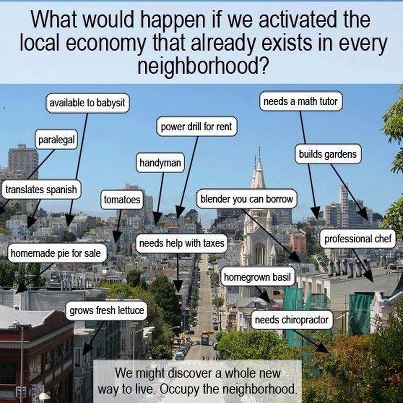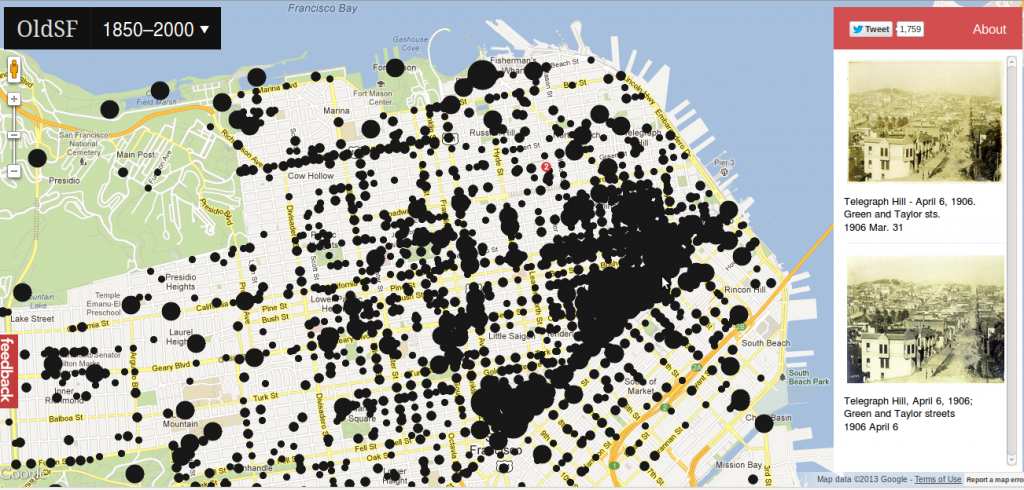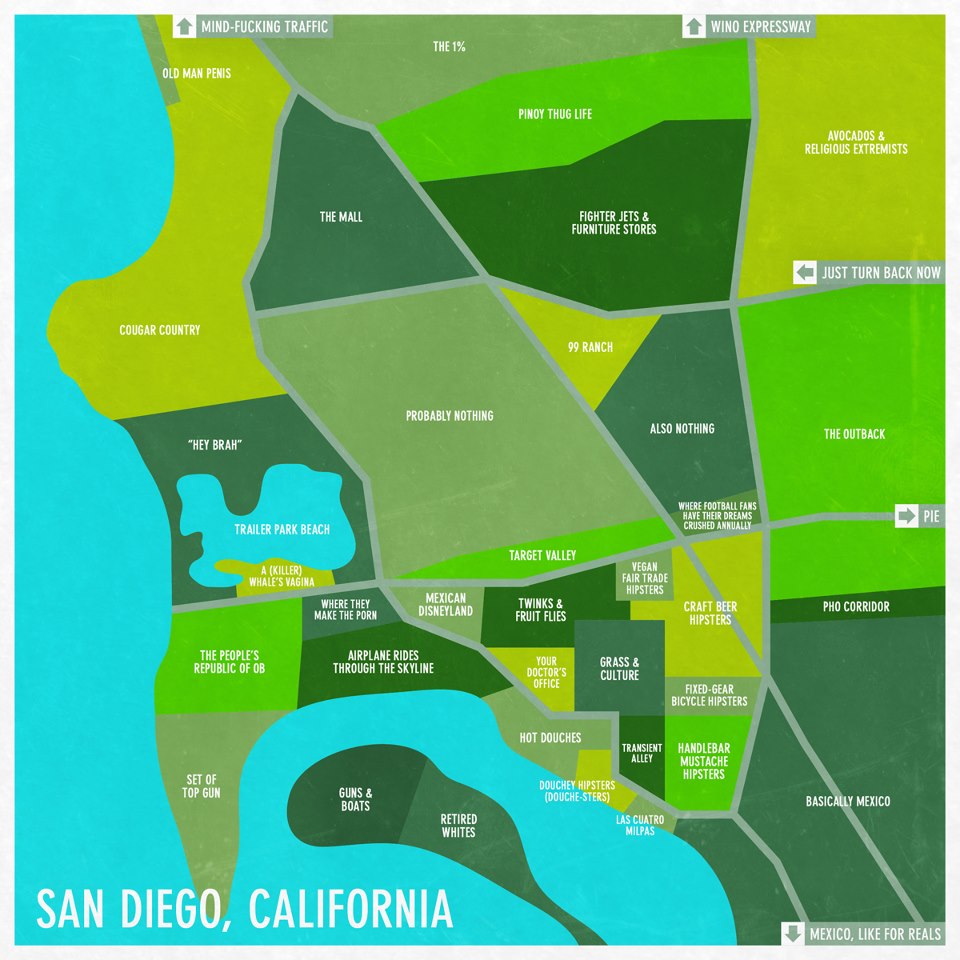Hyperlocalism seeks to bridge the physical/digital divide by focusing on the use of information to create technology tools and media oriented around a well-defined area and inspired by the needs of local residents. Maps and mesh networks are tools that can be particularly leveraged to enable hyperlocal connectivity and information flow; I’ll briefly unpack the latter (mesh) and then demonstrate the possibilities for hyperlocal mapping.
510pen as conceptualized by Mark Burdett is based on the principles of the Open Wireless Movement: that by sharing our wifi with our neighbors, we contribute to increasing access to the internet while simultaneously creating more positive relationships with our local communities. This premise is clearly the most obvious benefit of mesh networking and is enthusiastically supported by the folks I’ve been talking with in Oakland, who see the lack of widespread internet access in their neighborhoods as a very present and real issue.
Then there is the application layer – which is the level at which TidePools is working to create software for hyperlocal neighborhood mapping. Beyond internet access, a resilient communications network endeavors to create point-to-point networks that mesh the barriers between physical and virtual space. What kinds of data and landmarks define the available resources and value of a physical community?
It might look something like this:

…in which the skills and resources of your neighbors are made visible and available to others on the local network.
Or perhaps like this, visualizing the history of a neighborhood through a timeline-based photographic montage:

Alternatively, we could use hyperlocal mapping to depict a more realistic sense of the cultural characteristics of various neighborhoods, rather than the oft-arbitrary borders drawn by state governments:

As I continue interviewing and chatting with folks about things they’d love to see on local maps, a few themes have emerged:
Here are some projects I’ve been working on with some other hard-working, socially-conscious people that are tackling these needs:
I welcome and encourage further suggestions and use cases in the comments below!
Leave a Reply to Anonymous Cancel reply